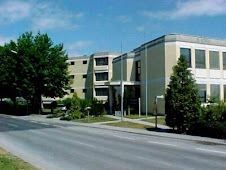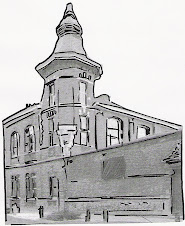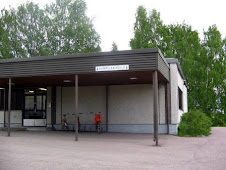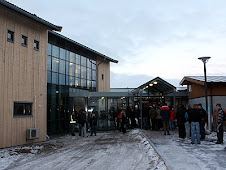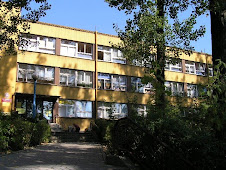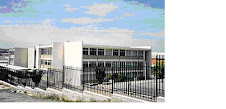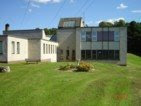Thursday, 30 April 2009
Wednesday, 29 April 2009
Girls from Italy
Three of our girls decided to introduce themselves and our school with a short video. We are not very good at ICT yet, but we are working on it!
Monday, 27 April 2009
Although Greek Easter is over, it’s not too late to present you the traditional Easter bread, called “tsoureki”. This delicious sweet bread is topped with almonds or sesame seeds, and usually includes a traditional red egg.
In Greece we always serve tsoureki with the Easter meal, but all the children try it with their cup of milk in breakfast. Its ingredients are: flour, yeast, butter, sugar, eggs, mahlepi (spice) or mastic, milk, sesame seeds or sliced almonds, hard boiled dyed red eggs.This bread is traditionally prepared with an essence drawn from the seeds of a Mediterranean spice, called mahlepi, which makes the kitchen smell delicious. Sometimes tsoureki is used as gifts for special occasion, for instance, it can be given as an Easter gift. Written by Teo, A3 class
.
Pasg Hapus
Fianna, Barker's Lane School, Wales
This is my video of reception class. Jake was finishing his Easter card on the front it says Pasg Hapus. This is Happy Easter in Welsh. Lucky reception had just been on an Easter hunt that is why he was still wearing his Easter hat. Hope you like it.
This is my video of reception class. Jake was finishing his Easter card on the front it says Pasg Hapus. This is Happy Easter in Welsh. Lucky reception had just been on an Easter hunt that is why he was still wearing his Easter hat. Hope you like it.
Howto ... make sandwiches
Here's a sort of instruction-movie how our students have to make sandwiches.
They make these sandwiches every day and we try to let as many students as possible make them.
So, all of them have to follow the instructions on the movie.
They make these sandwiches every day and we try to let as many students as possible make them.
So, all of them have to follow the instructions on the movie.
Sunday, 26 April 2009
Video Barker's Lane Easter biscuits
Lauren Barker's Lane School, Wales
This video is about year 1 showing me their Easter biscuits. They made some cool shortbread in the shape of an egg then decorated them with lots of different coloured icing. It was really yummy!! Year 1 work with year 2 in the afternoons doing lots of different fun activities like this one as part of the foundation phase teaching in our school.
This video is about year 1 showing me their Easter biscuits. They made some cool shortbread in the shape of an egg then decorated them with lots of different coloured icing. It was really yummy!! Year 1 work with year 2 in the afternoons doing lots of different fun activities like this one as part of the foundation phase teaching in our school.
Tuesday, 21 April 2009
Barker's Lane Video
Natalie, Barker's Lane, Wales.
I hope you like my video of the sensory garden and grounds in my school. We enjoy chilling out in the sensory garden, makes a change from running around on the MUGA. Sometimes we come here to do art, or just look at how the flowers change. My friends Caitlin, Lauren and Fianna stared in this video. Can you see the labyrynth it's really cool.
I hope you like my video of the sensory garden and grounds in my school. We enjoy chilling out in the sensory garden, makes a change from running around on the MUGA. Sometimes we come here to do art, or just look at how the flowers change. My friends Caitlin, Lauren and Fianna stared in this video. Can you see the labyrynth it's really cool.
Monday, 20 April 2009
Parents cook for us...

Last Friday I had a Parents meeting to talk about students evaluation and behaviour, since the class involve in this project is from a special education, like a vocational course for student with 15 to 17 years old.
I ask the collaboration of a mother to cook the typical Easter cake in Portugal, at the begging she was a bit surprise because we past Easter, but them she told me she will try to do it. So, this morning my student bring the cake and we eat it ;-) (it was very good) and my student make the photos and will produce the movie next Wednesday!!
I was very happy with the parents collaboration for the project! And of course we have the parent permission to publish students work!
Cyprus Easter
Koulouria and Flaounes

.png)
Flaounes are the traditional Easter cheese breads we make in Cyprus. Traditionally they are made on Good Thursday and it's not an easy job. The preparations usually start from the previous day .
These cheese breads are made with a very flavorful bread dough and filled with a cheese called "Pafitiko" made during the Easter period for flaounes. However, this can be substituted by a mixture of other Cypriot cheeses such as halloumi or kaskavalli or the Greek cheeses ladotyri Mytilinis, graviera, kefalograviera and some kefalotyri. Kefalotyri is usually very salty, so don't add too much. We usually make more dough than necessary to make some koulouria, which is a very aromatic bread. In many parts of Cyprus they prefer to make them sweet by adding sugar and raisins, which is an excellent combination of salty and sweet.
Greek Easter wishes
Happy Easter * Kaló Páscha
Happy Easter * Kalí Anastási
Christ is risen Christós Anésti
Truly he is risen Alithós Anésti
Easter Wishes Chroniá Pollá
Pascha is the period before Easter Sunday, so you wish "Kalo Pascha" then, especially when the Holy Week starts. You wish "Kali Anastasi" when Easter Sunday is very close, especially after Holy Thursday and Friday. And of course you wish "Christos Anesti" on Easter Sunday when Christ is already risen.
Koulouria and Flaounes

.png)
Flaounes are the traditional Easter cheese breads we make in Cyprus. Traditionally they are made on Good Thursday and it's not an easy job. The preparations usually start from the previous day .
These cheese breads are made with a very flavorful bread dough and filled with a cheese called "Pafitiko" made during the Easter period for flaounes. However, this can be substituted by a mixture of other Cypriot cheeses such as halloumi or kaskavalli or the Greek cheeses ladotyri Mytilinis, graviera, kefalograviera and some kefalotyri. Kefalotyri is usually very salty, so don't add too much. We usually make more dough than necessary to make some koulouria, which is a very aromatic bread. In many parts of Cyprus they prefer to make them sweet by adding sugar and raisins, which is an excellent combination of salty and sweet.
Greek Easter wishes
Happy Easter * Kaló Páscha
Happy Easter * Kalí Anastási
Christ is risen Christós Anésti
Truly he is risen Alithós Anésti
Easter Wishes Chroniá Pollá
Pascha is the period before Easter Sunday, so you wish "Kalo Pascha" then, especially when the Holy Week starts. You wish "Kali Anastasi" when Easter Sunday is very close, especially after Holy Thursday and Friday. And of course you wish "Christos Anesti" on Easter Sunday when Christ is already risen.
Sunday, 19 April 2009
Figolli - A Maltese traditional Easter biscuits
The children had a lot of fun baking Easter figolli. Figolli are traditionally baked at Easter time and given as presents to children. Thanks to two wonderful parents who came to our kindergarten to give a helping hand.
Fruitful Times

Here is a leaflet which has been published by our Local Authority. One of our local schools has made up recipes for healthy girls and healthy boys. What do you think?
A recipe for a healthy girl
Begin with an 11 year old.
Mix in a handful of sugar.
Then a pinch of happiness, cook well.
Fold in 5 fruit and veg a day, add water.
Stir in 8 hours of sleep and a toothbrush.
Finally pour in two pots of Petit Filous a day for strong bones.
A recipe for a healthy boy.
First take 10kg of boy.
Next add a packet of energy.
Now add a pinch of fat.
Boil a heart to make it pump well.
Put five footballs in for 90 minutes then scramble them on a pitch.
Now spread with vitamins.
Season with fruit and veg.
Finally serve with friends and a smile.
(Thank you to Musselburgh Burgh School for this great idea!)
Thursday, 16 April 2009
Romanian students' work for Easter

The Romanian students had a contest with Easter theme and here are some of their works. Enjoy! Suprising for the positive attitude about cookIT, they are preparing some magic... cookie. Don't ask! You know, we'll have Easter on Sunday. We have a student, you'll know her, she's a very talented on painting the religious themes.



Tuesday, 14 April 2009
Spanish Torrijas
We hope you had a lovely Easter time.
In Spain we have eaten the traditional "Torrijas".
They are delicious and are very easy to cook.
The ingredients we need are:
-Some slices of bread ( a couple of days old)
-Eggs
-Sugar
-Cinnamon
-Olive oil
What do we do next? We cut thick slices of bread
We cut thick slices of bread
 We mix sugar and cinnamon into the milk
We mix sugar and cinnamon into the milk
 We dump the bread first into the milk mix
We dump the bread first into the milk mix We dump the milked sliced into the egg
We dump the milked sliced into the egg
We sprinkle each slice of bread with sugar on both sides. 
We can now enjoy this yummy torrijas!!
AND REMEMBER....
THIS IS A PERFECT RECIPE TO COOK WHENEVER YOU HAVE SOME BREAD THAT HAS GONE A BIT HARD !!
Sunday, 12 April 2009
Happy Easter from Scotland
Thursday, 9 April 2009
Easter in Poland
Easter Drawings from Malta
 |
| Make a Smilebox slideshow |
Traditionally, in Malta, we eat lots of sweets at Easter. We make drawings of Easter eggs and Chocolate bunnies. We also send you some photos of figolli, an Easter biscuit.
 |
| Make a Smilebox greeting |
Wednesday, 8 April 2009
Monday, 6 April 2009
Poland tradition - painted aggs.

Students perform the painted eggs.
Painted eggs and Easter.
Our school is a long tradition.
 Students in class Vc
Students in class Vc - Ola Fryc; - Anna Majchrzak; - Dominika Kowalczyk; - Sandra Chrobak; - Paulina Kaczynska;
- Natalia Rduch; - Kamil Barteczko; - Bartosz Marcisz; - Pawel Szczepaniak.
- project supervisor - Wlodzimierz Sidorow
Sunday, 5 April 2009
A typical Norwegian meal for Easter-Roasted Leg of Lamb
Roasted Leg of Lamb / Stekt lammelår
This is the Norwegians’ typical main meal for Easter. Many Norwegians go away to their log cabins in the mountains for the Easter holidays, so they will either cook this meal there, or at home. It is a simple recipe, but is very delicious and all Norwegians love it!
Recipe
For 6 people:
Ingredients: Gravy:
1 leg of lamb (roughly 2,5 kgs.) 8 dl of juices from the roasted leg of lamb
2 tsps. Salt 4 dessert spoons flour, mixed to a paste in cold water
1 tsp. pepper 1 dessert spoon blackcurrant juice, or red wine
2 tsps.crushed fresh rosemary 1 tsp. soy sauce
2 chopped garlic cloves ½ tsp. pepper
1 onion, chopped into 4 quarters ½ tsp. salt
3 carrots
1. Rub the salt, pepper, garlic and herbs into the uncooked leg of lamb
2. Put the onion and carrots in a buttered, ovenproof tray/dish. Put in the leg of lamb. Cook at 125c. for 2 to 3 hours.
3. Let the roast stand for at least a quarter of an hour, packed in tinfoil. In the meantime, make the gravy from the meat juices.
4. Serve the meat with creamed potatoes or roasted potato-boats, peas, carrots, mushrooms and chopped parsley.
This is the Norwegians’ typical main meal for Easter. Many Norwegians go away to their log cabins in the mountains for the Easter holidays, so they will either cook this meal there, or at home. It is a simple recipe, but is very delicious and all Norwegians love it!
Recipe
For 6 people:
Ingredients: Gravy:
1 leg of lamb (roughly 2,5 kgs.) 8 dl of juices from the roasted leg of lamb
2 tsps. Salt 4 dessert spoons flour, mixed to a paste in cold water
1 tsp. pepper 1 dessert spoon blackcurrant juice, or red wine
2 tsps.crushed fresh rosemary 1 tsp. soy sauce
2 chopped garlic cloves ½ tsp. pepper
1 onion, chopped into 4 quarters ½ tsp. salt
3 carrots
1. Rub the salt, pepper, garlic and herbs into the uncooked leg of lamb
2. Put the onion and carrots in a buttered, ovenproof tray/dish. Put in the leg of lamb. Cook at 125c. for 2 to 3 hours.
3. Let the roast stand for at least a quarter of an hour, packed in tinfoil. In the meantime, make the gravy from the meat juices.
4. Serve the meat with creamed potatoes or roasted potato-boats, peas, carrots, mushrooms and chopped parsley.
Saturday, 4 April 2009
Our favourite lunch
We take a pre-packed lunch to school. Look us show you what we like to eat. And look at our drawings too!! Malta
Our school Boudonville
The first song you listen is a circle, like "Ring a ring o' roses", and the second has been created by a friend musician P.E. Kuntz, from the european anthem, Beethoven 9th symphony. We hope you'll enjoy, CE1H.
Subscribe to:
Comments (Atom)


















